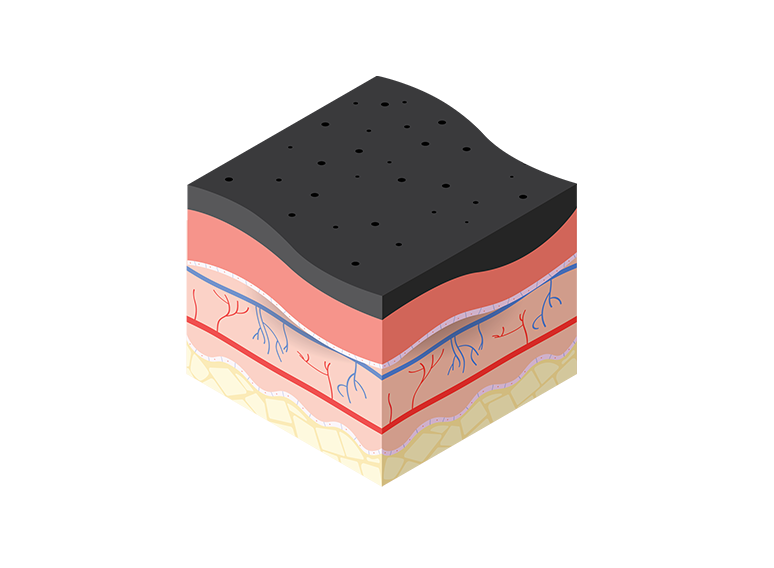
What is a Necrotic Wound?
Necrotic tissue is dead or devitalised non-viable tissue which impedes wound healing. The typical black, dry and leathery covering over the wound bed, which has been starved of oxygen through a lack of blood supply, is known as Eschar.
The presence of necrotic material within the wound can delay healing and provide an environment for infection¹.
Necrotic tissue can also:
• Harbour bacteria², increasing the risk of infection
• Cause odour, which can have a negative impact on patient quality of life
• Increase the volume of exudate being produced³
- Obscure the true condition/size of the wound (Stephen-Haynes and Callaghan, 2012)
• Act as a physical barrier to epithelial cell migration.

Treatment Aims
Necrotic tissue must be removed by debriding the wound to allow new tissue to form and cover over the wound bed, prompting granulation and to decrease wound bioburden. Find out more about the different debridement methods here.
Products that treat Necrotic Wounds

Learn More
With the Education HubWant to learn more about a range of different wound types and how they can be treated? Visit our free Education Hub.
Wound Types
Select a wound type below to discover more...
-

Slough refers to the yellow/white material in the wound bed.
-

Granulation describes the appearance of the red, bumpy tissue in the wound bed as the wound heals.
-

Epithelialisation is the final stage of wound healing and is pink/white in colour.
-

Cavity wounds can be defined as a wound that extends beneath the dermis.
-

A fungating wound develops when cancer that is growing under the skin breaks through the skin and creates a wound.
-

A scar may appear flat, lumpy, sunken, or coloured.
-

Infection can develop in any type of wound and is usually accompanied by pain, inflammation and swelling.
-

Return to the Wound Guide Information Page
References
1. NICE (2001) Technology Appraisal Guidance 24: Guidance on the use of debriding agents and specialist wound care clinics for difficult to heal surgical wounds. NICE, London.
2. AWTVNF (2013) Larval Debridement Therapy. Available at: www.welshwoundnetwork.org/files/6513/8632/3119/AWTVNFlarval_finalforweb_opt.pdf (accessed 20 October, 2014)
3. Vowden K, Vowden P (2011) Debridement Made Easy. Wounds UK Available at: http://www.wounds-uk.com/made-easy/debridement-made-easy (accessed 23 October, 2014)













